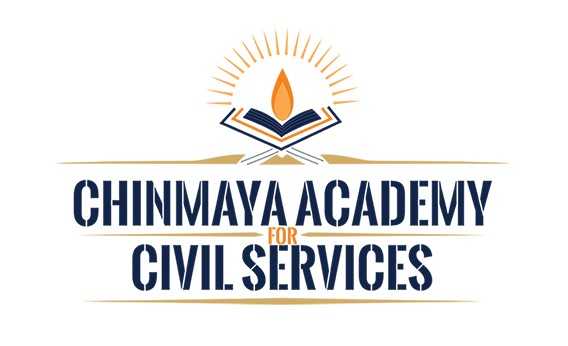The UPSC Civil Services Exam consists of three stages: Preliminary, Mains, and Interview. During the Mains, candidates must choose one optional subject, which is crucial in determining their ranking in the exam. Literature subjects have seen a growing success rate in recent years.
Santhali Literature, also known as Santali, is an optional subject offered in the UPSC Civil Services examination. As one of the 22 official languages recognized by the Constitution of India, Santhali is an optional subject for the UPSC Mains exam. The language is spoken in several Indian states, including Chattisgarh, Jharkhand, Bihar, Assam, West Bengal, Odisha, Tripura, and Mizoram.
To prepare for the Santhali Literature component, candidates should familiarize themselves with the syllabus and recommended books. The language of the Austroasiatic family is distinct from others spoken in north and central India, and answers must be written in the Olchiki script. Santhali Literature carries a total of 500 marks, divided between two papers, each worth 250 marks.
Ideal candidates for this subject are those who have previously studied or learned Santhali in school or as their native language. The linked article provides further information on the syllabus and recommended books for this subject and other optional subjects for the UPSC Mains exam.
SANTHALI
PAPER I
(Answers must be written in Santhali)
Section A
Part I—History of Santhali Language
1. Main Austric Language family, population and distribution.
2. Grammatical structure of Santhali Language.
3. Important character of Santhali Language: Phonology, Morphology, Syntax, Semantics, Translation, Lexicography.
4. Impact of other languages of Santhali.
5. Standardization of Santhali Language.
Part II—History of Santhali Literature
1. Literary trend of the following four periods of history of Santhali Literature.
(a) Ancient Literature before 1854.
(b) Missionary period Literature between 1855 to 1889 AD.
(c) Medieval period: Literature between 1890 to 1946 AD.
(d) Modern period : Literature from 1947 AD to till date.
2. Writing tradition in History of Santhali literature.
Section-B
Literary forms—Main characteristics, history and development of following literary forms.
Part I
Folk Literature in Santhali—folk song, folk tale, phrase, idioms puzzles, and Kudum.
Part II
Modern literature in Santhali
1. Development of poetry and prominent poets.
2. Development of prose and prominent writers.
(i) Novels and prominent Novelists.
(ii) Stories and prominent story writers.
(iii) Drama and Prominent Dramatist.
(iv) Criticism and prominent critics.
(v) Essay, sketches, memoirs, travelogues and prominent writers.
Santhali writers
Shyam Sundar Hembram, Pandit Raghunath Murmu, Barha Beshra, Sadhu Ramchand Murmu, Narayan Soren ‘Toresutam’, Sarda Prasad Kisku, Raghunath Tudu, Kalipada Soren, Sakla Soren, Digamber Hansda, Aditya Mitra ‘Santhali’, Babulal Murmu ‘Adivasi’, Jadumani Beshra, Arjun Hembram, Krishna Chandra Tudu, Rupchand Hansda, Kalendra Nath Mandi, Mahadev, Hansda, Gour Chandra Murmu, Thakur Prasad Murmu, Hara Prasad Murmu, Uday Nath Majhi, Parimal Hembram, Dhirendra Nath Baske,
Shyam Charan Hembram, Damayanti Beshra, T.K. Rapaj, Boyha Biswanath Tudu.
Part III
Cultural Heritage of Santhali tradition, customs, festival and rituals (birth, marriage and death).
PAPER II
(Answers must be written in Santhali)
Section A
This paper will require in-depth reading of the following texts and the questions will be designed to test the candidates’ critical ability.
Ancient Literature :
Prose
(a) Kherwal Bonso Dhorom Puthi—Majhi Ramdas Tudu “Rasika”.
(b) Mare Hapramko Reyak Katha—L.O. Scrafsrud.
(c) Jomsim Binti Lita—Mangal Chandra Turkulumang Soren.
(d) Marang Buru Binti—Kanailal Tudu.
Poetry
(a) Karam Sereng—Nunku Soren.
(b) Devi Dasain Sereng—Manindra Hansda.
(c) Horh Sereng—W.G. Archer.
(d) Baha Sereng—Balaram Tudu.
(e) Dong Sereng—Padmashri Bhagwat Murmu ‘Thakur’.
(f) Hor Sereng—Raghunath Murmu.
(g) Soros Sereng—Babulal Murmu “Adivasi”.
(h) More Sin More Ndia—Rup Chand Hansda.
(i) Judasi Madwa Latar—Tez Narayan Murmu.
Section B
Modern Literature
Part I—Poetry
(a) Onorhen Baha Dhalwak—Paul Jujhar Soren.
(b) Asar Binti—Narayan Soren “Tore Sutam”.
(c) Chand Mala—Gora Chand Tudu.
(d) Onto Baha Mala—Aditya Mitra “Santhali”.
(e) Tiryo Tetang—Hari Har Hansda.
(f) Sisirjon Rar—Thakur Prasad Murmu.
Part II—Novels
(a) Harmawak Ato—R.Karstiars (Translator—R.K. Kisku Rapaz).
(b) Manu Mati—Chandra Mohan Hansda.
(c) Ato Orak—Doman Hansdak.
(d) Ojoy Gada Dhiph re—Nathenial Murmu.
Part III—Stories
(a) Jiyon Gada—Rup Chand Hansda and Jadumani Beshra.
(b) Mayajaal—Doman Sahu ‘Samir’ and Padmashri Bhagwat Murmu ‘Thakur’.
Part IV—Drama
(a) Kherwar Bir—Pandit Raghunath Murmu.
(b) Juri Khatir—Dr. K.C. Tudu.
(c) Birsa Bir—Ravi Lal Tudu.
Part V—Biography
Santal Ko Ren Mayam Gohako—Dr. Biswanath Hansda.


